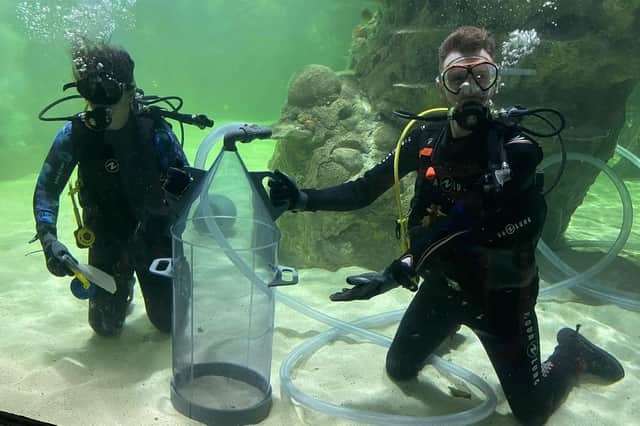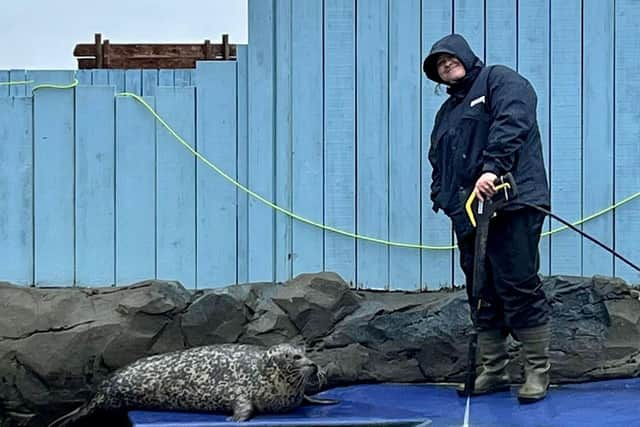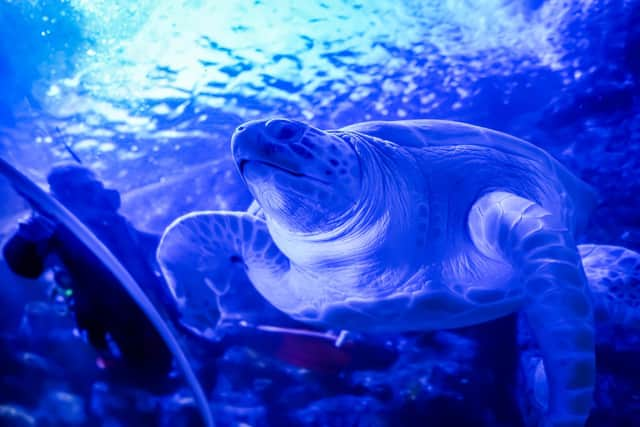Cleaning 'more a military operation than a mundane task' at SEA LIFE Scarborough
This article contains affiliate links. We may earn a small commission on items purchased through this article, but that does not affect our editorial judgement.


With more than 16,700 creatures living in 271 habitats across the country, it takes a lot to keep their animals homes clean from top to tail.
Whether it’s cleaning and polishing the 756 glass windows or vacuuming the gravel to suck away all the poo that sticks to the bottom of the habitats, each day has a new and interesting cleaning challenge for the team to tackle.
Advertisement
Hide AdAdvertisement
Hide AdIn fact, it takes an entire troupe to undertake this ray-markable cleaning operation, with up to 44 people being tasked with this mammoth job across the country every day, working over 700 hours a week between them.


However, it’s not just employees who are tasked with keeping SEA LIFE centres spic and span as some of the residents also play their part too!
Many of the locations are home to Cleaner Wrasse fish which set up a cleaning station within their habitats which other fish visit to have their gills, skin and teeth cleaned, a bit of a one-stop makeover shop for sea creatures!
The cleaning task at SEA LIFE is more than just your average sweeping and polishing, as the teams must adopt a fin-tastic array of cleaning techniques to ensure that the habitats are fit for their residents.
Advertisement
Hide AdAdvertisement
Hide AdThe only way to scrub many of the giant ocean displays is by diving, which requires a team of qualified divers to do the job surrounded by sharks, stingrays and turtles.


Whilst it’s steel toe caps at the ready when heading into the seal hospitals to hose down the rescue seals pens at SEA LIFE Scarborough and Hunstanton
Elsewhere at SEA LIFE Brighton, every morning an aquarist undertakes a ‘tunnel walk’ to clean the glass tunnel that guests walk through.
Whilst this is a tricky task in itself the curious creatures often add an extra element of surprise when they pop by to say hello! In other sites, giant magnets are employed to clean the ocean tunnel – it’s no easy feat!
Advertisement
Hide AdAdvertisement
Hide AdWhilst cleaning is a very important part of the teams’ day, they also spend 1000’s of hours a week feeding, caring for and providing engaging enrichment for their resident sea creatures.
Todd German, Curator at SEA LIFE Scarborough, said: “With over 2,500 creatures on site and more than 40 displays to maintain, cleaning is more of a military operation than a mundane task at SEA LIFE Scarborough!
“As animal welfare is always our number one priority, our dedicated team is committed to providing the highest level of care possible, with our team working tirelessly to ensure that each habitat is spotless.”
For further information or to visit your local SEA LIFE, visit: https://www.visitsealife.com/.